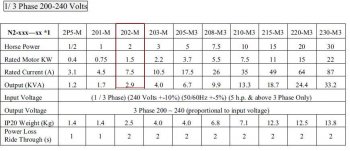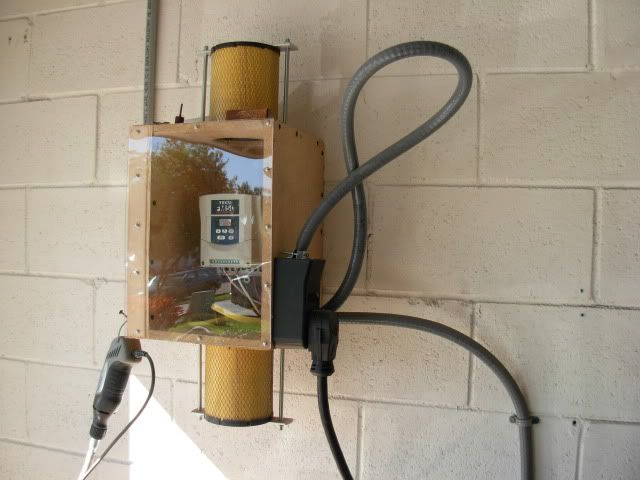maganinooo states that his VFD is IP65
This is the metric equivalent of NEMA 4, Sealed against dust and liquid spray.
http://en.wikipedia.org/wiki/IP_Code
No need for homemade enclosures like on the TECO50 Nema 1.
For the motor I would look for
2 hp
3 phase
240 volt (220 )
Get an enclosure with a baseplate you can bolt down
Make sure that the shaft size matches the pulley that you can buy.
a 56 frame has a 5/8" shaft
a 143 frame has a 7/8" shaft
If you get your motor and pulley locally, you will have metric standards that I don' know about.
Do you research on what is available and buy the pulleys first
TENV Totally Enclosed Non Ventilated is the best type of motor "Inverter Duty"
It is made to handle the heat without the fan ventilation.
It gives better torque at low speed.
As you run a fan cooled motor, it gets less air at low speed and may overheat
(Source: Page 12 of the manuals for the KBAC-27D controller that Wayne sells
http://www.kbelectronics.com/manuals/kbac_manual.pdf)
They are not common and are more expensive when buying new.
If you can find one on ebay, It may be cheaper because people are searching for TEFC
...and I now just screwed myself out of any ebay motor deals on these....
TEFC is the most common and cheaper it will work fine because we are not putting a high torque load on the motor.
If you are building the NWG you have to use a pulleys anyway, buy the 1400 rpm moter and put the 3 step pulleys on it.
It will allow you to run the motor in the higher speed range (with better motor cooling and better torque) and step the speed down at the pulley.







